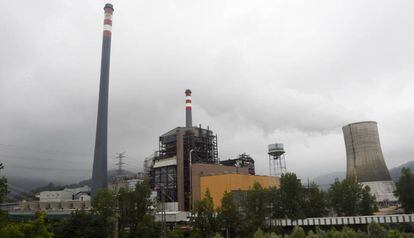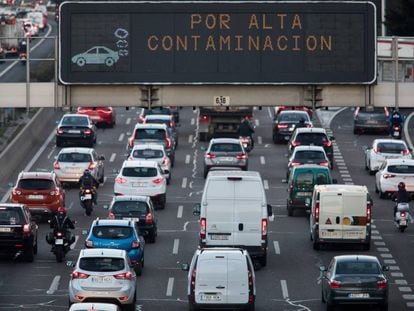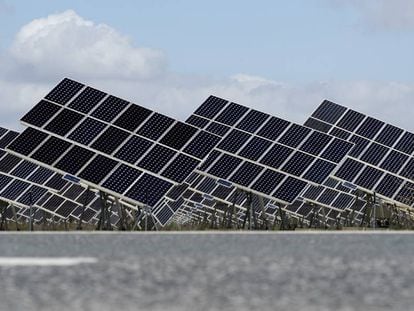Blame the weather: why Spain is failing to meet EU climate change targets
Greenhouse gas emissions must be cut by one third in just over a decade if the country is to meet its 2030 goals


Spain’s efforts against climate change are still not enough. In line with European Union goals, Spain’s target is to achieve an economic system by mid-century with practically zero greenhouse gas emissions, which scientists have linked to climate change. But to do this, the country has to reach a series of intermediate goals that seem unattainable with Spain’s current legislation and tools.
For one, Spain has failed to separate economic growth from greenhouse gas emissions. Figures released on Monday confirmed what several organizations had been warning about for months: that along with an improved economy, emissions grew by 4.4% in 2017 – the biggest year-on-year spike since 2002.
Spain can no longer entrust the good or bad results of emissions on weather conditions
Hugo Morán, State Secretary for the Environment
A spell of dry weather has been partly to blame for last year’s rise in emissions, leading environmental authorities to underscore the need for a plan that does not rely so much on outside factors. Transportation is also a leading cause of emissions in Spain.
The Spanish government has pledged to cut greenhouse emissions by 20% below 1990 levels by the year 2030. This involves reducing more than 100 million tons of emissions, or one third of the current volume.
But in a document sent to the European Commission in March 2017, the previous Popular Party (PP) administration admitted that it did not expect emissions to go down between 2017 and 2030 unless extraordinary steps were taken. This means that, barring any significant change, by 2030 Spain’s emissions will be in the range of 330 million tons of CO2 equivalent, the measure used for these gases.
Avoiding this situation would require climate change legislation containing extraordinary measures to curb emissions. But the Popular Party (PP) government of Mariano Rajoy was removed from power in a no-confidence motion last month, without having introduced so much as a draft in parliament. This was partly due to a divergence of opinions between the Environment and Energy ministries.
The cost of transportation
Transportation accounts for 26% of all greenhouse gas emissions in Spain, representing the biggest share. In 2017, this sector increased emissions by 2.6%, chiefly due to a rise in emissions in road travel. Transportation is lagging behind other sectors such as power generation when it comes to decarbonization, and it could hold Spain back in the fight against climate change. The previous government sent Brussels a forecast last year admitting that Spain’s greenhouse gas emissions from transportation will grow by 15% between now and 2030.
The new Socialist minister in charge of environmental affairs, Teresa Ribera, has pledged to have a bill ready for Congress between November and December. In a recent interview with EL PAÍS, she said she will set a 2030 emissions target of 20% below 1990 levels. This means that in under 12 years, Spain’s economy would have to produce no more than around 230 million tons of CO2 equivalent.
Last year Spain produced 338.8 million tons, partly because of a drought that reduced the supply of hydroelectricity; the gap was filled mostly by coal-powered plants. In May, the labor union CC OO warned about the rise in emissions. And the Ecological Transition Ministry confirmed it on Monday with new figures.
“It is a negative balance, and it reveals the need for greater penetration of renewable sources in our energy mix,” said Hugo Morán, the state secretary for the environment, in a statement. “Spain can no longer entrust the good or bad results of emissions on weather conditions. It is necessary to define a road map to maintain top results, even in adverse weather conditions, and to disconnect economic growth from greenhouse gas emissions as soon as possible.”
English version by Susana Urra.












































